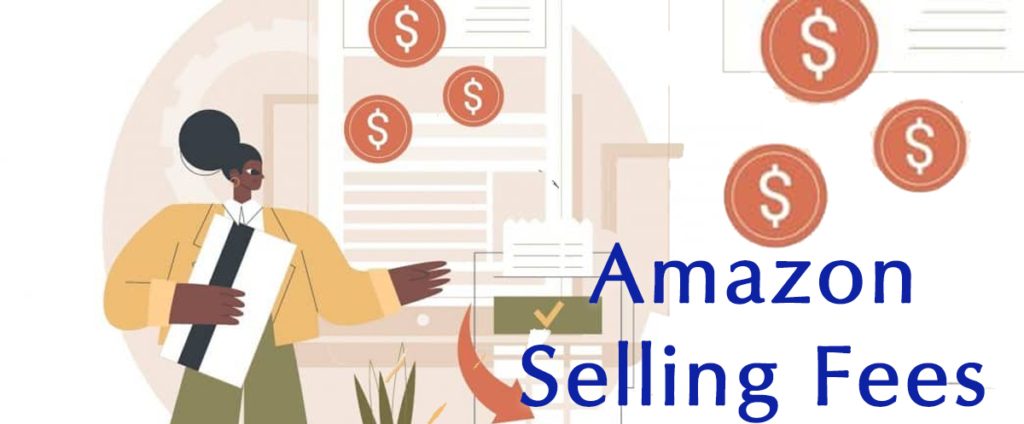A guide to Amazon Seller Fees (and how to reduce them)
Focusing on potential profits mostly is so easy, especially if you’re just starting out with Amazon selling. However, in order to truly enjoy long term gains and wins, you have to be a little smarter than that and take into account how the various Amazon seller fees might impact your business.
Being aware of what these fees are (and how to potentially reduce them) can help you save lots of money, and that will be critical to improving and maximising your profits on Amazon.

What are Amazon Seller Fees?
Selling on Amazon can be a fantastic experience, especially as you watch your business grow before your very eyes, but as you most likely know, that success doesn’t come free.
While Amazon is allowing you to sell your products on its platform and providing many benefits in the process, it’s going to, naturally, charge you for it. Being aware of all the various seller fees, therefore, is very important as you don’t want to be unaware when Amazon takes a cut of your sales or charges you for using the FBA program, and you’re left with a “what the….”.
Ultimately, however, whatever fees you end up paying is well worth it, and if these fees are managed correctly, there’s absolutely no reason why you can’t be profitable on Amazon.
Let’s first familiarise you with the various seller fees on Amazon:
Seller account fee
When you sign up for a Seller Central membership, you’re expected to pay a fee.
The Amazon Individual Seller membership sets you back by 75p each time you sell a product. On top of that, you must pay a referral fee of 7% to 45% and a closing fee which may be between 0.36p and £1.08. We’ll shed more light on the referral fee in just a moment.
The Amazon Professional Seller membership entails a monthly £25 subscription fee (£28.75 if you include VAT) no matter how many items you sell, so you don’t have to pay the 75p for every product sold. However, the same referral and closing fee ranges apply to Professional Seller accounts.
Let’s do the math here quickly:
If you believe that you’ll be selling under 40 products or items in a month, than it’s more economical to choose the Individual Seller plan, but if you realise that you will be selling over 40 products or units in a month, then it makes more sense to go with the Professional Seller plan.
Plus, the latter offers additional benefits like selling in multiple categories and utilising Amazon ads to promote products, and even extending ‘free shipping’ promotions to your buyers.
Referral fee
Whenever you make a sale, a specific percentage of the total sale price is paid to Amazon. We can see it as a kind of ‘finder’s fee’ since Amazon is more or less facilitating transactions between you and your buyers.
Now, the percentage you are charged depends on the category you are selling under, where the fees may range between 6% and 45%. With that said, the average fee usually ranges between 8% and 15%.
You can find the full list of Amazon referral fees across the EU here.
FBA fee
You may very well be using Amazon’s FBA program to sell your products as it’s quite advantageous vs. using no FBA, although keep in mind there are certain fees to consider.
The FBA process involves you shipping your inventory to Amazon’s designated warehouses so that they can carry out the order fulfillment process from there. Your products will remain at one of their warehouses – whenever you make a sale, Amazon will prepare the order for you and ship it off.
With FBA fees, there’s two kinds to consider:
Storage Fees is the fee Amazon charges for the storage of items in their warehouse. It’s a monthly charge based on your items’ dimensions in cubic feet. Additionally, keep the following in mind:
- Bigger items will cost more to store in Amazon’s warehousing facilities, so it’s best to stick to smaller items to save as much as you can.
- Flammable and corrosive items along with those that may be ‘potentially harmful’ to people are considered “dangerous” by Amazon. This will increase storage fees.
- Storage fees tend to shoot up in October, November, and December. Avoid having your products sit in storage for too long, especially during these months, as the costs can rack up quickly.
Fulfillment fees are a set portion of your FBA fees, covering the cost of order pick-up from storage, preparing them for shipment, and then mailing them to your buyers. The heavier the product, the more Amazon will charge you. Plus, there is an extra charge for clothing items and “dangerous” items.
Shipping fee
Shipping fee isn’t charged by Amazon themselves, but you still have to pay it whether you’re having the items shipped through FBA or on your own accord (FBM). Shipping fee works differently according to the type of seller you are:
FBA sellers – The cost of shipping to your customer is included in your FBA fees, but you still have to pay for shipping items to one of Amazon’s warehouses. This cost mostly depends on the size and weight of the complete package you ship which, again, is a major reason to stick to smaller, lightweight items and packages whenever possible.
FBM sellers – With sellers utilising Fulfilled By Merchant, Amazon pays you a shipping credit for each order to cover the costs. However, the amount they pay you is typically less than the actual cost of shipping your products, so you can bet those shipping costs will quickly start cutting into your profits. Different charges are applied according to your item category, and whether the delivery is standard, expedited or two-day.
If you subtract your credit from the shipment costs, you can determine how much you will be paying for the shipping. Always keep this cost in mind when setting prices for your products. Additionally, if you’re offering free shipping, you won’t receive any credit from Amazon, in which case, you’ll be bearing the shipping costs yourself.
Additional fees
Processing fee – There’s a £0.079 charge on every unit shipped to Amazon via FBA
Removal of orders – At times, you may need to remove items from Amazon’s FBA storage facilities. In this case, you must pay £0.39 for every standard-sized item removed and £0.99 for every oversized item removed. In addition, disposal per item costs £0.11 per standard-sized item and £0.39 per oversized item.
Variable closing fee – Amazon will add a £1.44 fee on top of sales made under any of its media categories, including DVDs, software, music, books, and video games.
How can I lower my Amazon Seller Fees?
Choose Amazon FBA only if you must
Most sellers getting a Professional Amazon plan tend to go with Amazon FBA to enjoy lower seller fees but that’s only on the condition that you have a relatively large inventory, great sales volume, and a vast number of orders – so, it makes sense to outsource all these to a designated warehouse and save some costs. Still, many sellers end up asking themselves: “FBA fees are constantly increasing, what do I do?”
It may be wise to choose FBM instead – well, in the seed stages of your business, anyway. You will be handling orders yourself but that also means that you can have more options in terms of choosing packaging and shipping options that are more wallet-friendly.
Be smart about your packaging
If you decide to stick with FBA, that’s great. However, by choosing the ideal packaging size and weight, you can cut some costs. For instance, if the size of the box determining its voluminous weight is bigger than the actual weight of the package, you’re better off revising your choice of packaging to avoid paying for essentially what’s empty space.
Do your best to avoid refunds
Sometimes refunds are unavoidable. Just know that each time you process a refund, Amazon makes a commission. It makes sense because essentially they are losing out on business too. So, Amazon will charge an administrative fee and also charge a small percentage on the referral fee. Just do everything possible to avoid refunds altogether – they are bad for your seller ranking and can be costly.
Share your product details transparently through a clear, well laid out, and fully optimised product description to manage buyer expectations.
Join ABR
The Amazon Brand Registry Program is a great way to lower your seller referral fees. You can cut it by attracting targeted traffic through 3rd party sources. For example, you can attract prospects through social media and enjoy a referral fee discount once those prospects have purchased from your Amazon store.
Manage inventory better
This applies if you’ve chosen FBA. If you manage your inventory more intelligently – i.e. by balancing demand with supply – your products will not be lying around for too long in Amazon’s warehouses.
If they do, Amazon will charge £5.51 for every cubic foot your product occupies or £0.11 per unit (whichever one is higher), on products that lie around for 365 days or more.
Want to learn more smart and savvy ways to reduce your seller fees as much as possible? Chris and his team are always available to offer tailored advice according to your product and business goals.
Disclaimer: While we have made every attempt to mention the most accurate rates at the time of publishing, Amazon changes seller fees and other associated rates on a very regular basis. We recommend checking the rates with Amazon according to your region to get more accurate and up to the minute figures.



